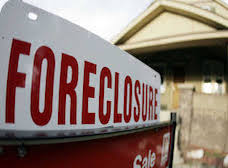 The Year-End 2020 U.S. Foreclosure Market Report from ATTOM Data Solutions shows that foreclosure filings were reported on 214,323 U.S. properties during the year, which was down 57 percent from 2019 and 93 percent from a peak of nearly 2.9 million in 2010, to the lowest level since tracking began in 2005.
The Year-End 2020 U.S. Foreclosure Market Report from ATTOM Data Solutions shows that foreclosure filings were reported on 214,323 U.S. properties during the year, which was down 57 percent from 2019 and 93 percent from a peak of nearly 2.9 million in 2010, to the lowest level since tracking began in 2005.
Those properties with foreclosure filings (default notices, scheduled auctions and bank repossessions) represented 0.16 percent of all U.S. housing units, down from 0.36 percent in 2019 and down from a peak of 2.23 percent in 2010.
“The government’s moratoria have effectively stopped foreclosure activity on everything but vacant and abandoned properties,” explains Rick Sharga, executive vice president of RealtyTrac, an ATTOM Data Solutions company. “There is a backlog of foreclosures building up – loans that were in foreclosure prior to the moratoria; loans that would have defaulted under normal circumstances; and loans whose borrowers are in financial distress due to the pandemic.
“While it’s still highly unlikely that we’ll see another wave of foreclosures like the one we had during the Great Recession, we really won’t know how big that backlog is until after the government programs expire,” he says.
Lenders repossessed 50,238 properties through foreclosure (REO) in 2020, down 65 percent from 2019 and down 95 percent from a peak of 1,050,500 in 2010, to the lowest level as far back as data is available (2006).
Counter to the national trend, there were metropolitan statistical areas with a population greater than 200,000 that saw a year-over-year increase in REOs, including Lake Havasu, Ariz. (up 30 percent); Champaign, Ill. (up 29 percent); Chico, Calif. (up 26 percent); and Bremerton, Wash. (up 25 percent).
Lenders started the foreclosure process on 131,372 U.S. properties in 2020, down 61 percent from 2019 and down 94 percent from a peak of 2,139,005 in 2009, to a new all-time low.
“The impact of the government foreclosure moratoria and mortgage forbearance programs is nowhere more obvious than in the foreclosure start numbers from 2020,” Sharga remarks. “We ended the year with a near-record number of seriously delinquent loans, but historically low levels of foreclosure activity.
“The good news is that the government and mortgage industry succeeded in working together to prevent unnecessary foreclosures; the question remains how many homeowners whose finances have been affected by the pandemic will ultimately default on their loans, and whether the strength of the housing market will help cushion the fallout,” he says.
States that saw declines in foreclosure starts from last year included Oregon (down 79 percent); Kansas (down 77 percent); Arkansas (down 77 percent); Nevada (down 71 percent); and Massachusetts (down 70 percent).
Counter to the national trend, Idaho saw a slight uptick (up 4 percent) from last year.
Read Full Article [Source: www.mortgageorb.com]




